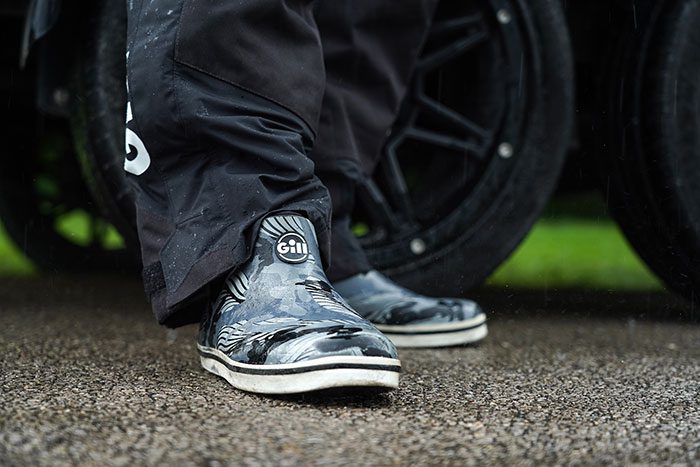
As winter loosens its grip and nature awakens, anglers eagerly await the start of the spring fishing season. With the multiple phases and constant change in bass behavior, the spring freshwater fishing season can be challenging. But this only makes it more rewarding when you master it and see success.
When Does the Spring Fishing Season Start?
The exact time of year that the spring fishing season starts will depend on which state you are fishing. In the Northern states, it starts in late March and Early April, while in the Southern states, it will start as early as February. But to make it simple, the spring bass fishing season begins as soon as air temperatures begin to rise. The bass can feel this slight increase and will begin transitioning into the first phase of spring, the pre-spawn.
Breakdown of the Three Spring Phases
There are three distinct phases of spring bass fishing. Bass behave much differently throughout each one, and this requires specialized fishing techniques from anglers in order to have success.
Pre-Spawn Phase
The pre-spawn period for bass occurs in spring when water temperatures rise. During this time, bass become more active, feed aggressively, and migrate to shallower areas like flats and points. The bass need to prepare to spawn by eating lots of food and finding the ideal spawning grounds.
Where to Find Pre-Spawn Bass

These bass will be slowly transitioning from the deep, winter areas towards the middle of the lake into the shallow flats near the bank. This means that the bass can be fairly spread out, and are usually not holding as closely to cover. In large lakes, this will typically be between the 10-20 foot range. In smaller lakes and ponds, focus on the 5–10-foot depths.
Pre-Spawn Bass Behavior
Early spring bass are very aggressive because they need to bulk up for the spawn. However, the water is still quite cold. So while these bass are hungry and looking for food, they are still not as willing to chase super-fast baits. In winter, they fed very opportunistically on easy meals. Now, they are actively on the hunt, but don’t yet have the metabolism to expend unnecessary energy. It can help to use brighter and flashier lures because the spring rains will dirty up the water. With this rain, it also helps to have a waterproof jacket to keep you dry while you are on the water.
Best Lures for Pre-Spawn Bass Fishing
Spinnerbait: Spinnerbaits with flashy blades can mimic fleeing prey and trigger strikes from aggressive bass. Colorado blades work great for early spring bass because you can fish them much slower while still giving off tons of vibration.
Chatterbait: Chatterbaits combine the vibration of a crankbait with the flash of a spinnerbait. In the pre-spawn, I prefer a straight tail trailer to limit the amount of rise the bait has so that I can keep it closer to the bottom.
Lipless Crankbait: Lipless crankbaits imitate dying baitfish, making them irresistible to pre-spawn bass. They are versatile and can be fished at various depths, making them effective in different water conditions. For some reason, red seems to be the best color for this time of year.
Tokyo Rig: The Tokyo Rig offers more of a finesse approach during the pre-spawn. Think of the Tokyo rig as a compact drop shot that can be fished a bit more aggressively. My favorite way to fish it this time of year is to slow roll a paddle tail swimbait on the bottom. The weight will keep the rig down while keeping the swimbait a couple inches off the bottom.
Spawning Phase
The spawning phase for bass occurs in spring when water temperatures range from 55 to 65 degrees Fahrenheit. During this period, bass select nesting sites, court, and pair up. The spawn will usually take place from April to May.
Where to Find Spawning Bass
The spawn is the easiest time of year to find bass. Bass will be sitting on their bright beds in the shallow flats. It helps to have a pair of polarized sunglasses so that you can spot the beds from farther away and in muddier water.
Spawning Bass Behavior
These bass are not really looking to eat. They ate enough during the pre-spawn to sustain them for a while, and they are putting all their energy into the birth and protection of their fry. But, because of how territorial and protective they are, you can get them to bite out of anger and agitation. Sometimes it takes dozens of casts to the same bass on the same bed to get them to bite.
Best Lures for Spawning Bass
Wacky Rig: The wacky rig, often featuring a soft plastic worm hooked in the middle. The wacky rig sinks slowly, so it can be fluttered right in front of the bass and kept on the bed for a long time.
Jig: A jig paired with a soft plastic trailer resembles a crawfish or bluegill. It’s an excellent choice for targeting bass in and around their nesting areas.
Drop Shot: The drop shot allows anglers to hover a soft plastic bait in the same exact spot for as long as they want. Shaking it right in front of the bass gets tons of bites.
Fluke: These soft plastic jerkbaits really seem to get spawning bass mad. They look like a baitfish coming in to rob the nest, and bass just hate it.
Post-Spawn Phase
Once the bass fry have become old enough to fend for themselves, the adult bass leave them alone and resume feeding. Post-spawn bass tend to be very aggressive since they haven’t eaten in weeks.
Where to Find Post Spawn Bass
Post spawn bass will be in one of two locations. Firstly, shallow cover. Most of the bass will move to shallow shad such as grass, trees, or docks. Second, slightly deeper water, just out of sight. There is only so much cover in a body of water, so the excess bass will cruise the shallow waters just out of sight and search for easy prey.
Post-Spawn Bass Behavior
Hungry! These bass haven’t eaten in weeks and they are super hungry. They want to eat, but are exhausted from the long spawn. They are either holding to cover or cruising shallow water in search of easy meals such as bluegill and the amphibians that have begun hopping and crawling around the water.
Best Lures for Post-Spawn Bass
Bluegill Swimbait: Bluegill is the number one forage for post-spawn bass, and there is no better way to mimic them than a realistic bluegill swimbait.
Hollow Body Frog: As the shallow water begins to become overrun with vegetation, a weedless frog will allow you to fish the thickest grass and weeds without getting hung up. The warm, spring weather also brings in lots of frogs, lizards, and other amphibians that bass love to eat.
Prop Bait: The prop bait is one of those lures that you aren’t exactly sure why it works so well, but it just does. I especially love throwing these lures when the spring rains muddy up the water. The loud props and visible, upward silhouette make it easy for bass to find the lure. During the post-spawn period, a bluegill prop bait catches so many bass. And who doesn’t love a topwater blowup?
Wacky Rig: The wacky rig is a great way to catch the cruising bass. Cast parallel to the bank about 6-10 feet off the shoreline. Twitch it in slowly and you will get lots of bites.
Reeling this In
In the intricate dance between bass and the changing seasons, spring offers anglers a unique opportunity to connect with nature. From the pre-spawn’s aggressive feeding frenzy to the delicate dance of courtship during the spawn and the post-spawn resurgence of hunger, each phase demands a tailored approach. Armed with knowledge of bass behavior and the right lures, anglers can navigate these phases with finesse, creating unforgettable moments on the water. As the days lengthen and temperatures rise, the spring fishing season unfolds—a dynamic spectacle that beckons anglers to embrace the rhythm of nature and the pursuit of the elusive bass.

